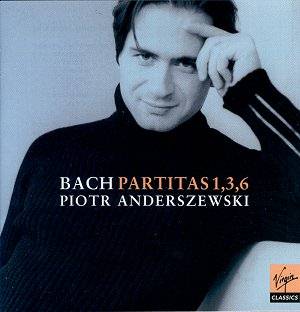|
|
Search MusicWeb Here |
|
 |
||
|
Founder:
Len Mullenger (1942-2025) Editor
in Chief:John Quinn
|
|
|
Search MusicWeb Here |
|
 |
||
|
Founder:
Len Mullenger (1942-2025) Editor
in Chief:John Quinn
|
 |
Johann Sebastian BACH
(1685-1750) Partita no. 1 in B flat major, BWV 825 Partita no. 3 in A minor, BWV 827 Partita no. 6 in E minor, BWV 830 Rec: November 2001, Studio de la Fondation Tibor Varga, Sion, Switzerland. |
|
|
|
||
Since receiving this new disc, containing three of Bach’s six keyboard partitas, I have listened to it over and over again, attempting to get a handle on Piotr Anderszewski’s interpretation of these works. It is not often that I am so perplexed by a performer that I cannot come to a conclusion more easily. With most pianists, these works show immediately the approach of the performer; whether the interpretation is restrained, unbridled, or somewhere in between these two extremes. But with this disc, there is no pinning down Anderszewski’s performance. |
|
Return to Index |